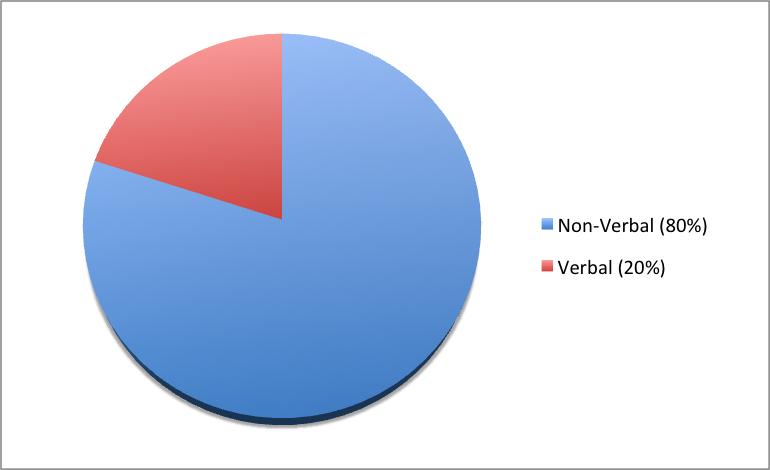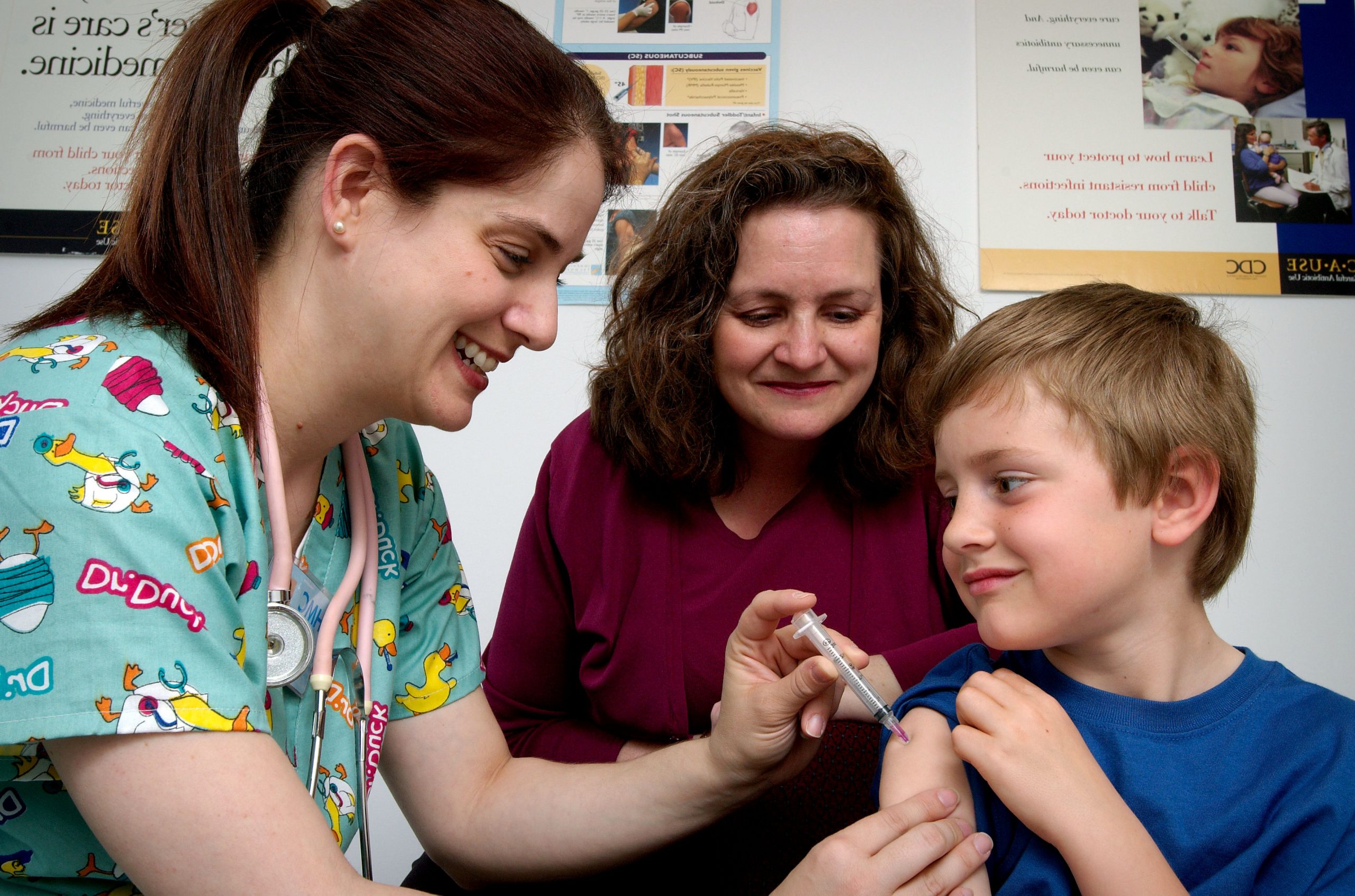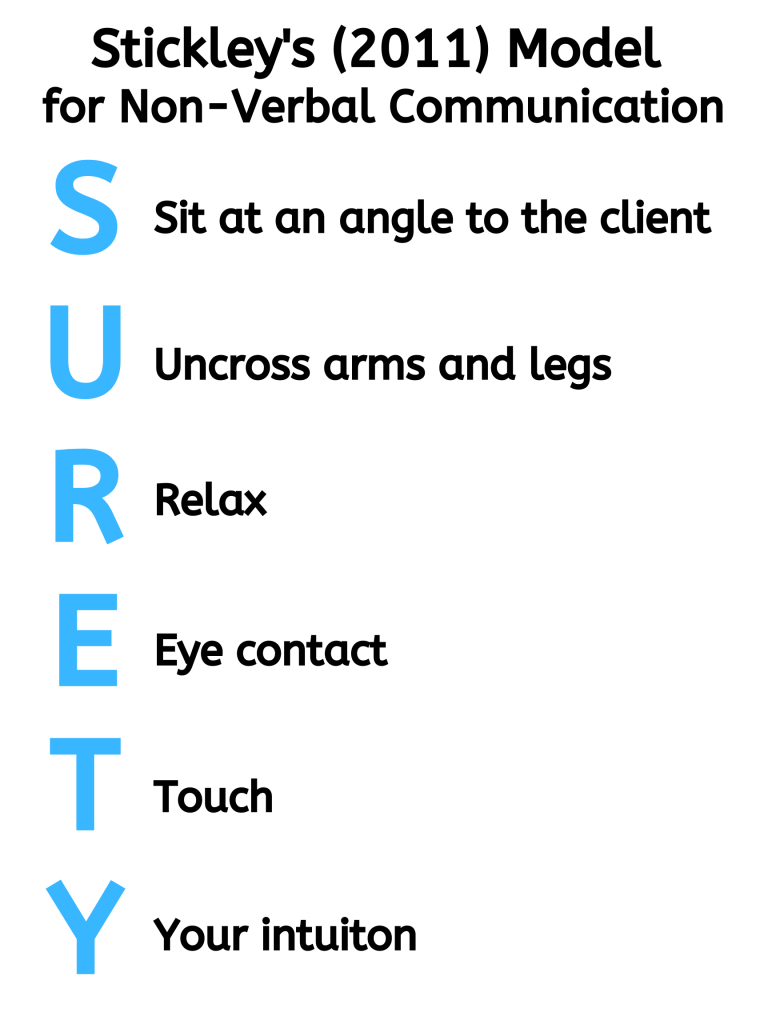Communication
Non-Verbal Communication Strategies
Jennifer Lapum; Oona St-Amant; Michelle Hughes; and Joy Garmaise-Yee
Nonverbal communication can have a tremendous impact on the communication experience and may be much more powerful than the verbal message itself. You may have previously learned that 80% of communication is nonverbal communication (see Figure 2.2[1]). The importance of nonverbal communication during communication has also been described in percentages of 55, 38, and 7, meaning 55% of communication is body language, 38% is tone of voice, and 7% is the actual words spoken.[2]

Nonverbal communication includes body language and facial expressions, tone of voice, and pace of the conversation. For example, compare the nonverbal communication messages in Figures 2.3[3] and 2.4.[4] What nonverbal cues do you notice about both toddlers?


Nurses should be attentive to their nonverbal communication cues and the messages they provide to patients and their families. Nurses should be purposeful in their use of nonverbal communication that conveys a feeling of caring.[5] What nonverbal cues do you notice about the nurse in Figure 2.5[6] that provide a perception of professional caring?

Nurses use nonverbal communication such as directly facing patients at eye level, leaning slightly forward, and making eye contact to communicate they care about what the person is telling them and they have their full attention.[7]
Non-verbal communication strategies are ways you communicate without speaking, for example through facial expressions, hand gestures, eye contact, and body language. See Figure 2.5.

Figure 2.5: Non-verbal communication
In many situations, much of your communication occurs through non-verbal behaviours. Non-verbal communication can be a useful strategy for communicating emotions like empathy, compassion, and acceptance. It is often how nurses respond, rather than what they say, that leaves a lasting impression on clients, so it is important to be aware of how you communicate using non-verbal behaviours.
Non-verbal behaviours must align with your verbal behaviours so that clients clearly understand what you are saying. For example, it would be confusing for the client if you had a somber tone of voice, distancing posture, and avoided eye contact while attempting to maintain a therapeutic relationship with the client.
Try to ensure positioning where you are both at the same vertical level and a slight angle towards one another. This positioning conveys an open and non-confrontational and non-authoritative space. Whenever possible, avoid standing over the client if they are sitting or lying in bed. It is better to sit down, which also conveys that you have time to listen to them.
There are many models to inform your non-verbal communication. One helpful model is called SURETY (Stickley, 2011) reflected as a modified version in Figure 2.6:

Figure 2.6: The SURETY model.
Points of Consideration
Physical touch
Touch can be therapeutic with clients when used appropriately. It can convey empathy and compassion. You should strike a balance about when it is therapeutically appropriate and when it is an intrusion for clients. It will take practice to learn when touch is appropriate.
Media Attributions
- Constituents_of_Communication
- 425407359_b67fdf9b59_h
- Figure 2.6
- “Constituents of Communication.png” by jb11ko, lb13an, ad14xz, jb12xu is licensed under CC BY-SA 4.0 ↵
- Thompson, J. (2011). Is nonverbal communication a numbers game? Psychology Today. https://www.psychologytoday.com/us/blog/beyond-words/201109/is-nonverbal-communication-numbers-game ↵
- “I’m angry” by WiLPrZ is licensed under CC BY-NC-ND 2.0 ↵
- “Happy Toddler” by Chris Bloom is licensed under CC BY-SA 2.0 ↵
- This work is a derivative of Human Relations by LibreTexts and is licensed under CC BY-NC-SA 4.0 ↵
- "PIXNIO-42752-4542x3003.jpg" by James Gathany, Judy Schmidt, USCDCP is in the Public Domain ↵
- Stickley, T. (2011). From SOLER to SURETY for effective non-verbal communication. Nurse Education in Practice, 11(6), 395-398. https://doi.org/10.1016/j.nepr.2011.03.021 ↵

